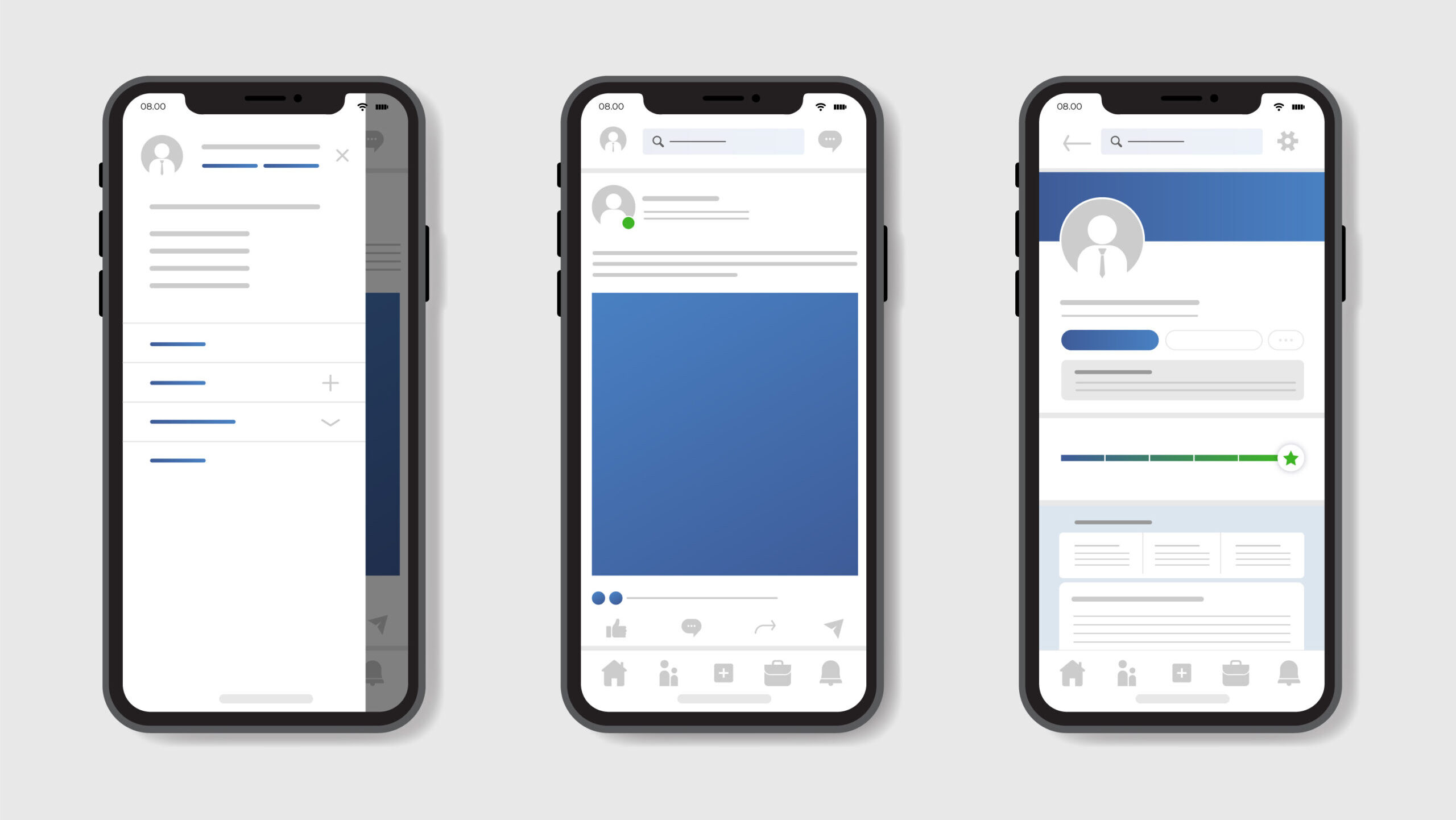
What is a Good CTR for LinkedIn Ads in 2025?
What is a Good CTR for LinkedIn Ads in 2025?
Anyone investing in LinkedIn Ads quickly finds themselves glued to CTR (click-through rate) metrics, trying to decipher what qualifies as “good”. The appetite for data is insatiable, but without context, numbers can deceive. In 2025, with competition increasing and budgets tightening, understanding where your efforts stand globally makes a difference to every campaign and every dollar.
Setting the Stage: Why CTR Still Matters
Despite the swirl of new metrics and attribution models, CTR remains a reliable measure of interest and ad resonance. Scroll past thousands of posts, and only an ad with something striking or relevant stops the thumb. If no one clicks, no one converts. Simple, but remains true—even on platforms as business-focused as LinkedIn.
CTR itself measures the percentage of people who engage with your ad after seeing it. It’s the linchpin metric showing that your target audience at least finds your message worthy of attention. Yet, industry chatter often misleads, with benchmarks scattered, sometimes with data from years old, or tied too closely to other platforms like Facebook or Google.
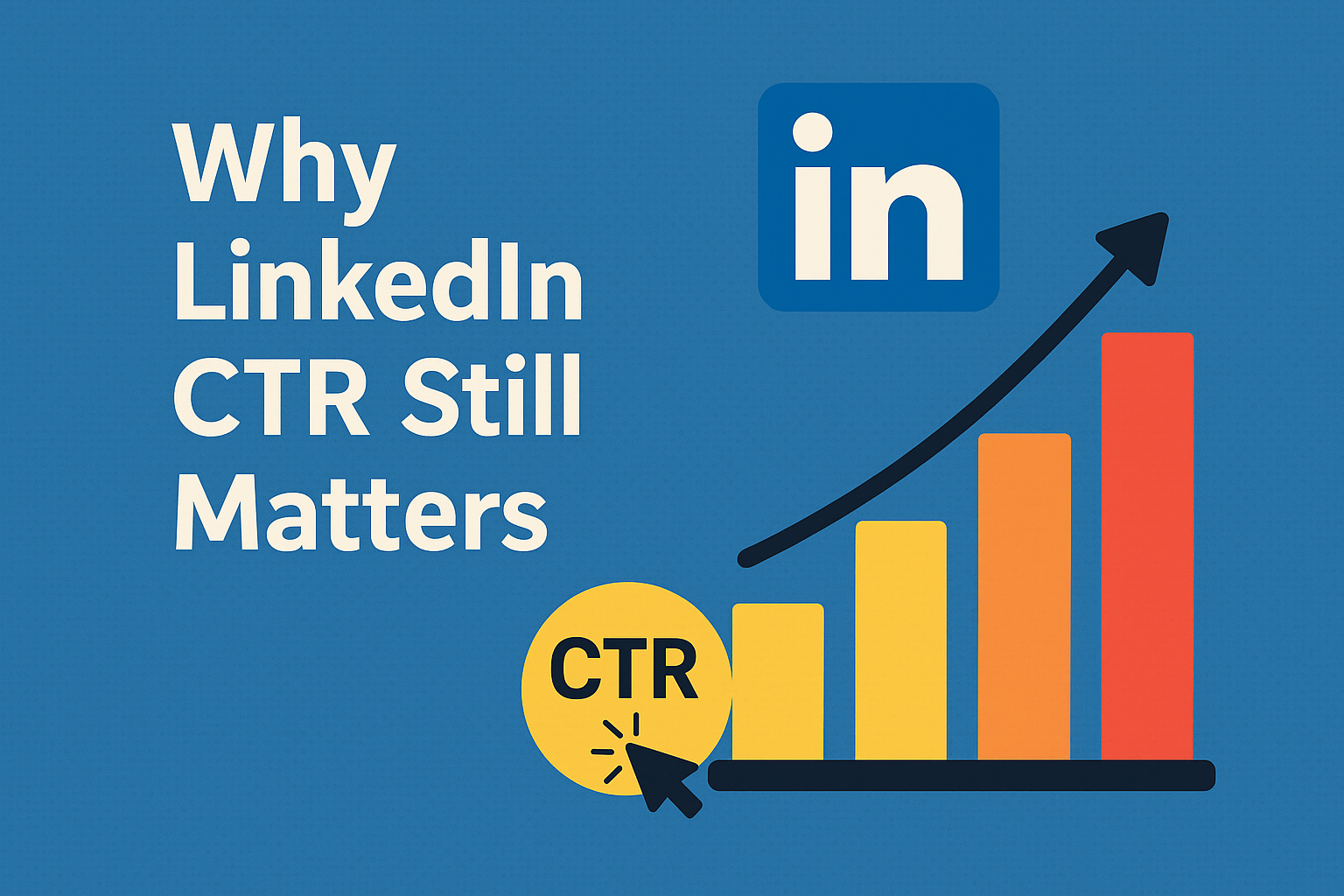
Average CTR Benchmarks on LinkedIn in 2025
Let’s get straight into the numbers. Here’s what global data reveals for different LinkedIn ad formats today:
| Ad Format | Average CTR (%) | Strong CTR (%) |
|---|---|---|
| Sponsored Content | 0.44 | 0.55+ |
| Sponsored Messaging | 3.2 | 4.5+ |
| Dynamic Ads | 0.06 | 0.10+ |
| Text Ads | 0.02 | 0.08+ |
| Video Ads | 0.45 | 0.65+ |
- Average values sourced from global campaigns across technology, professional services, finance, and education sectors.
A few key points:
- Sponsored Messaging CTR looks far higher since it measures ‘open’ and ‘click’ rates where personalisation is involved
- Text and Dynamic Ads tend to underperform in CTR, but may deliver strong conversions at low cost
- Anything at or above the ‘strong’ range should trigger deeper investigation—what’s working, and how can it scale?
What Drives a Higher CTR on LinkedIn Ads?
There’s never a single secret. But several factors reliably influence clicks.
Key Factors for Achieving Higher CTR on LinkedIn
To consistently drive higher click-through rates on LinkedIn, focus on these six proven strategies:
-
Test and Optimize Your Ad Copy
Continuously refine your messaging to discover what resonates best with your audience. A/B testing headlines, descriptions, and calls-to-action can reveal the most compelling combinations. -
Use Ad Extensions
Enhance your ads with extensions to provide additional information and increase visibility, making your offer more attractive and actionable. -
Improve Your Targeting
Sharpen your audience targeting by leveraging LinkedIn’s robust filters—such as job function, seniority, and skills—to ensure your message reaches the most relevant professionals. -
Optimize Your Landing Pages
Ensure that your landing pages are aligned with your ad’s promise, load quickly, and make it easy for visitors to take the next step. A seamless post-click experience boosts conversion rates and overall campaign effectiveness. -
Use Retargeting
Re-engage users who have previously interacted with your brand. Retargeting keeps your message top-of-mind and encourages prospects to return and convert. -
Monitor and Analyze Your CTR
Regularly track your click-through rates and other key metrics. Use these insights to identify trends, spot opportunities for improvement, and make data-driven adjustments to your campaigns.
By systematically applying these tactics, you can significantly improve your LinkedIn ad performance and achieve stronger engagement with your target audience.
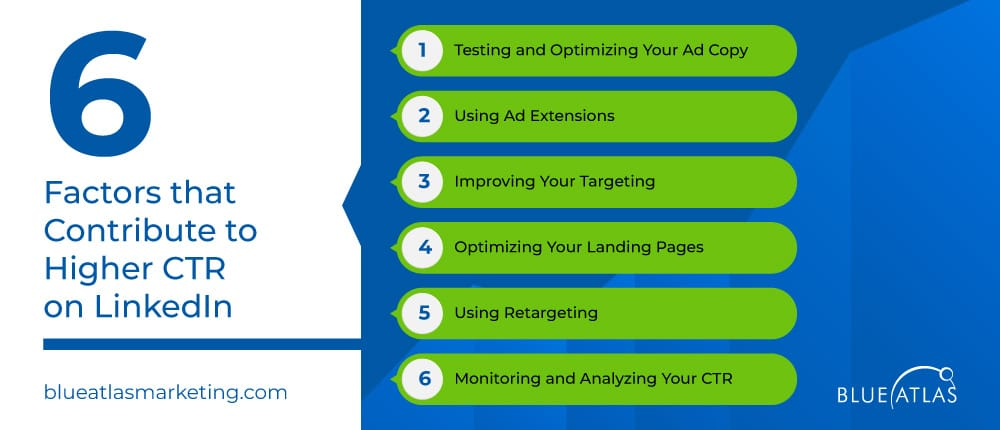
Image Source: Blue Atlas
Busting a Few Myths
LinkedIn’s typically “low” CTR compared to Facebook or Google doesn’t indicate poor performance. The audience is smaller and the decision-makers are often more strategic with their clicks. Even a 0.5% CTR on a LinkedIn ad hitting the right C-level audience can outperform a 2% CTR on other networks flooded with distractions.
It’s also common to mistake impressions for impact. High CTRs are easy to engineer with broad, clickbait content, but those clicks rarely turn into pipeline or revenue. The real win is in reaching and engaging the right eyeballs—the hand-raisers with budgets and authority.
Improving LinkedIn CTR: Tactics Backed by Results
Small changes can significantly boost your LinkedIn Ads CTR:
- Prioritize eye-catching visuals: Creative, attention-grabbing images or videos are the most effective way to increase clicks.
- Leverage LinkedIn’s advanced targeting options: Use the platform’s robust targeting features to reach the most relevant audience segments.
- Continuously refine your targeting: Regularly update and improve your audience filters to ensure your ads are seen by those most likely to engage.
- Use persuasive language and clear calls-to-action: Strong, action-oriented copy motivates users to click.
- Experiment with different ad formats: Testing a variety of formats helps you discover what resonates best with your audience.
- Monitor and adjust campaigns: Ongoing analysis and optimization ensure your ads stay effective and continue to deliver strong results.
By focusing on these proven tactics, you can consistently improve your LinkedIn Ads’ click-through rates and drive better campaign performance.
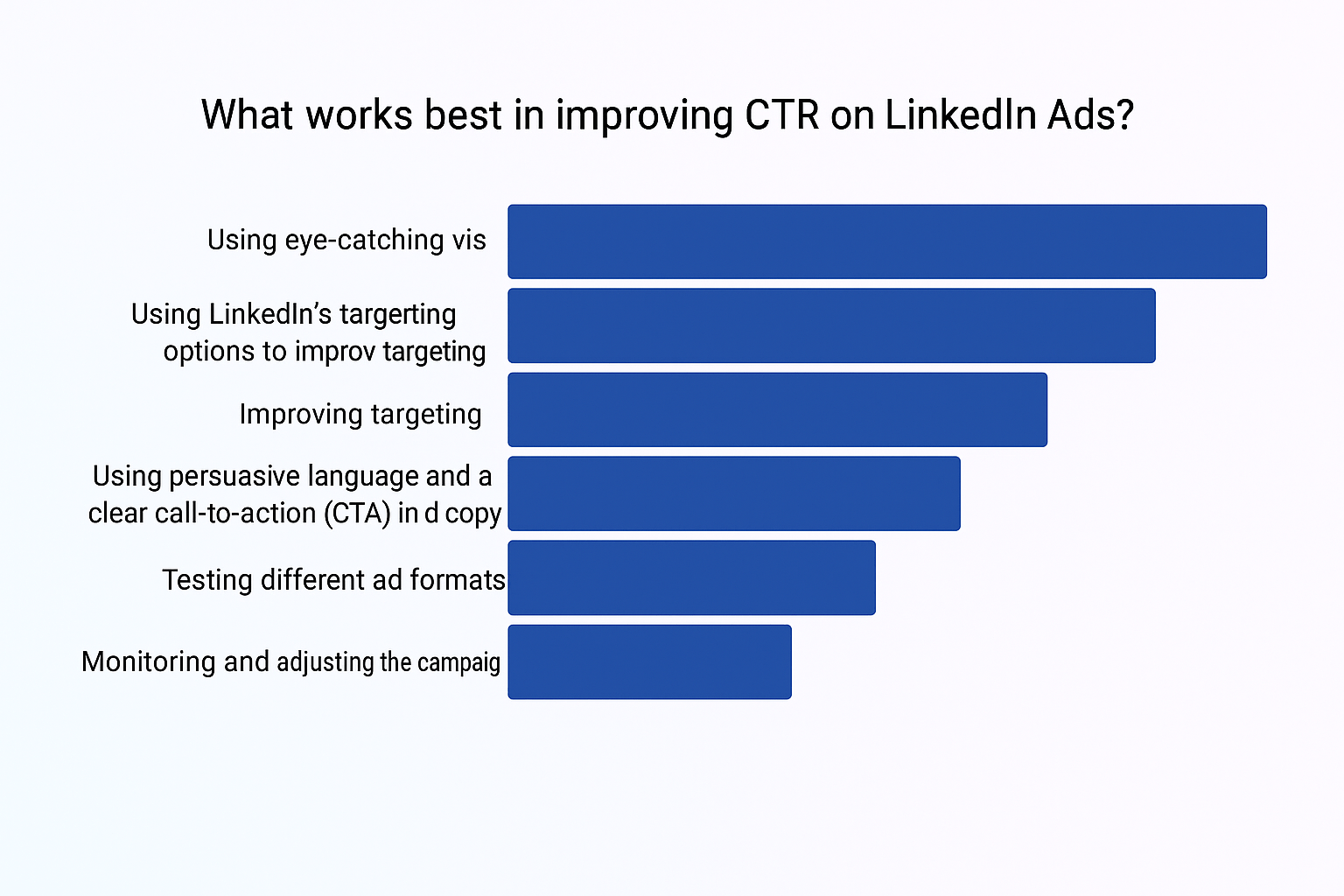
Aligning CTR with Business Objective
A healthy CTR isn’t the finish line. In B2B in particular, it’s just the start of a more measured process. Consider the full cost per lead or cost per acquisition, and the eventual deal size influenced by lead quality.
If your CTR is low but conversions remain strong and cost-effective, you could actually be filtering out window-shoppers and focusing on motivated buyers. Conversely, if CTR is high but few meaningful conversions result, it’s time to look at either creative quality or post-click experience.
LinkedIn Ads Benchmarks: A Global Overview
To make informed decisions and set realistic goals, it’s essential to understand how your LinkedIn Ads perform compared to global benchmarks. Below is a summary of key performance metrics—CTR, CPC, engagement rate, conversion rate, and cost per lead (CPL)—across major industries and ad formats. These benchmarks are based on recent global studies and industry reports.
| Industry | Ad Format | CTR (%) | CPC (USD) | Engagement Rate (%) | Conversion Rate (%) | CPL (USD) |
|---|---|---|---|---|---|---|
| Technology | Sponsored Content | .50–.70 | 6–9 | 1.5–2.5 | 5–8 | 75–120 |
| Finance | Sponsored Content | .45–.65 | 7–10 | 1.2–2. | 4–7 | 90–150 |
| SaaS | Sponsored Content | .55–.75 | 6–10 | 1.8–2.8 | 6–10 | 80–130 |
| Healthcare | Sponsored Content | .40–.60 | 5–8 | 1.–2. | 3–6 | 70–110 |
| B2B Services | Sponsored Content | .50–.68 | 5–8 | 1.3–2.2 | 5–9 | 80–140 |
| All Industries | Text Ads | .02–.08 | 3–6 | .5–1. | 1–3 | 60–100 |
| All Industries | Message Ads (InMail) | 3.–4.5 | 15–25* | 10–20 | 10–15 | 100–180 |
*Message Ads are typically charged per send, not per click, but the cost per click can be estimated based on average response rates.
Key Takeaways
- CTR: Sponsored Content generally achieves higher CTRs than Text Ads. Message Ads have high engagement but are priced differently.
- CPC: LinkedIn’s CPC is higher than most platforms, reflecting its premium, business-focused audience.
- Engagement Rate: Engagement rates are strongest in SaaS and technology sectors, where content is often highly targeted and relevant.
- Conversion Rate: SaaS and B2B services tend to see higher conversion rates due to precise targeting and strong value propositions.
- CPL: Cost per lead is highest in finance and B2B sectors, reflecting the value of high-quality leads.
Sources
- LinkedIn Marketing Solutions Global Benchmark Reports (2024–2025)
- AgencyAnalytics LinkedIn Ads Benchmarks 2025
- Sprinklr LinkedIn Benchmarks 2025
- Databox LinkedIn Ads CTR Report
What is a Good CPC for LinkedIn Ads?
Cost Per Click (CPC) is a crucial metric for evaluating the efficiency of your LinkedIn advertising spend. CPC represents the amount you pay each time someone clicks on your ad. Understanding what constitutes a good CPC—and how it relates to your click-through rate (CTR)—is essential for optimizing your campaigns and maximizing ROI.
How is CPC Calculated?
CPC is calculated by dividing the total amount spent on a campaign by the number of clicks received:
CPC = Total Spend / Total Clicks
For example, if you spend $500 on a campaign and receive 100 clicks, your CPC is $5.00.
Average CPC Ranges Globally
LinkedIn is known for its premium audience, particularly in the B2B space, which often results in higher CPCs compared to other platforms. Globally, average CPCs for LinkedIn Ads typically range from $1.51 to $7.28 USD, though this can vary significantly based on industry, targeting, and ad format. Highly competitive industries such as technology, finance, and SaaS may see CPCs at the higher end of this range or even above.
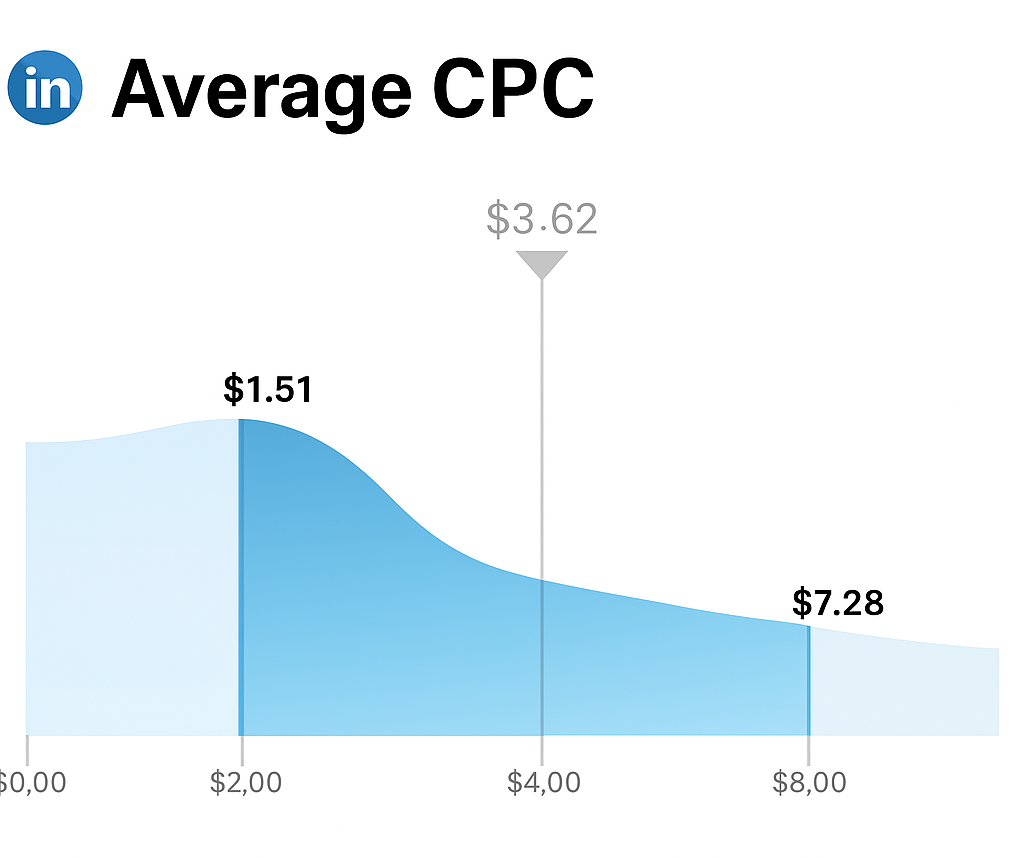
How Optimizing CTR Can Lower CPC
A higher CTR signals to LinkedIn’s algorithm that your ad is relevant and engaging, which can improve your ad’s quality score. As a result, LinkedIn may reward you with a lower CPC, allowing you to drive more traffic for the same budget. Conversely, ads with low CTRs may experience higher CPCs, as the platform seeks to prioritize more engaging content in users’ feeds.
CPC Benchmarks by Industry and Ad Format
- Sponsored Content: $5–$8 USD per click
- Text Ads: $3–$6 USD per click
- Message Ads (InMail): $15–$25 USD per send (not strictly CPC, but comparable)
- Dynamic Ads: $6–$10 USD per click
Industry benchmarks can vary, so it’s important to compare your results against peers in your sector and adjust your strategy accordingly.
How Engagement Impacts LinkedIn Ad Performance
Engagement is a vital indicator of how your audience interacts with your LinkedIn Ads. High engagement not only signals that your content resonates with your target market but also positively influences your campaign’s reach, cost efficiency, and overall effectiveness.
What Is Engagement Rate and How Is It Measured?
Engagement rate measures the percentage of people who interact with your ad after seeing it. On LinkedIn, engagement includes actions such as clicks, likes, shares, comments, and follows. The engagement rate is calculated as:
Engagement Rate = (Total Engagements / Total Impressions) × 100
A strong engagement rate suggests your ad is relevant and compelling, which can improve your ad’s quality score and potentially lower your CPC.
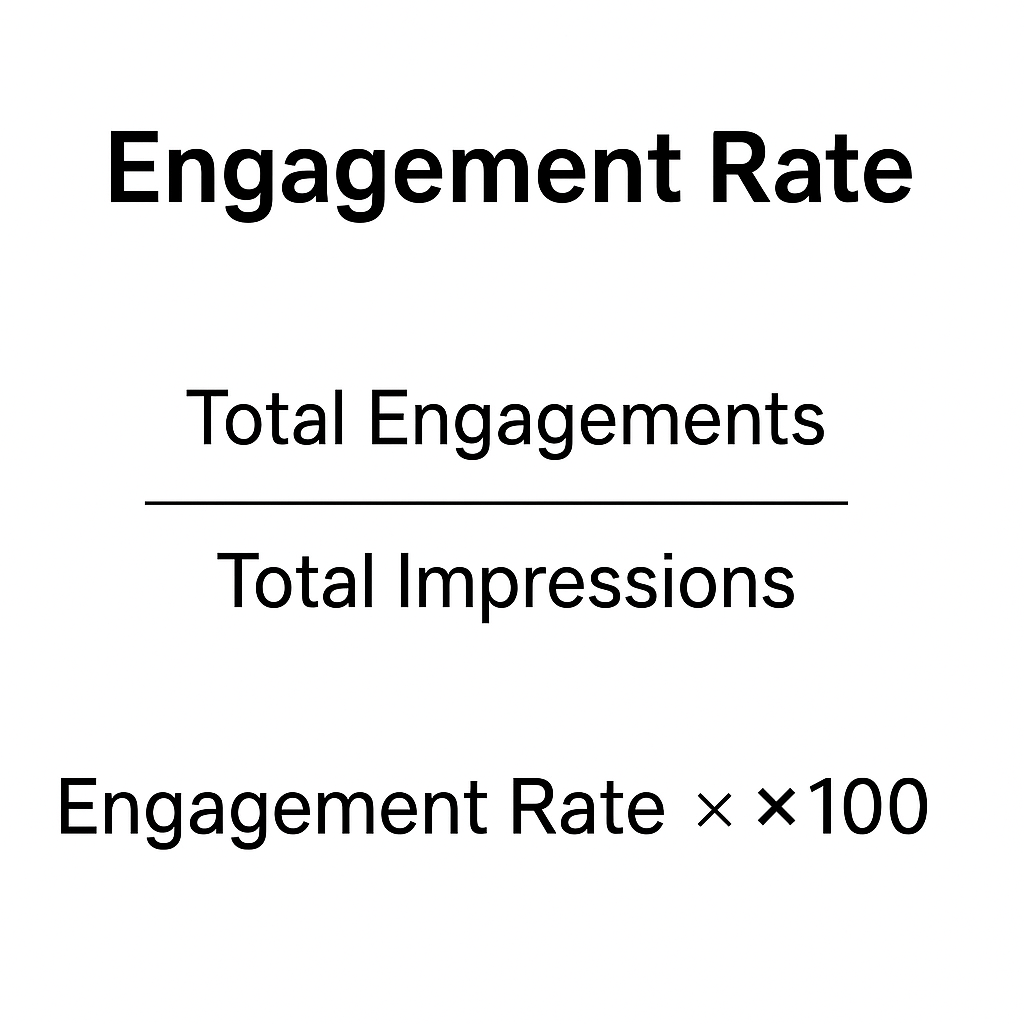
Why Engagement Matters
- Algorithm Boost: LinkedIn’s algorithm favors ads with higher engagement, increasing their visibility and reach.
- Cost Efficiency: Higher engagement can lead to lower CPC and better ROI, as LinkedIn rewards ads that drive meaningful interactions.
- Lead Quality: Engaged users are more likely to convert, making engagement a leading indicator of campaign success.
Strategies to Boost Engagement
- Use Interactive Content: Polls, quizzes, and carousel ads invite users to participate, increasing interaction rates.
- Craft Strong CTAs: Clear, action-oriented calls to action (e.g., “Download the Guide,” “Register Now”) drive users to engage.
- Leverage Rich Media: Video and eye-catching images consistently outperform text-only ads in engagement.
- Personalize Messaging: Tailor your ad copy to address the specific needs and pain points of your audience segments.
- Test and Optimize: Regularly A/B test headlines, visuals, and CTAs to identify what drives the most engagement.
Examples of High-Engagement Ad Formats
not all types of LinkedIn ad formats are classify as high-engagement ad formats we have listed few that drive high engagement for most of our client
- Video Ads: Capture attention quickly and deliver complex messages in an engaging format.
- Carousel Ads: Allow users to swipe through multiple images or offers, increasing time spent with your content.
- Conversation Ads: Enable personalized, interactive experiences directly in LinkedIn Messaging.
- Poll Ads: Encourage direct participation and feedback from your audience.
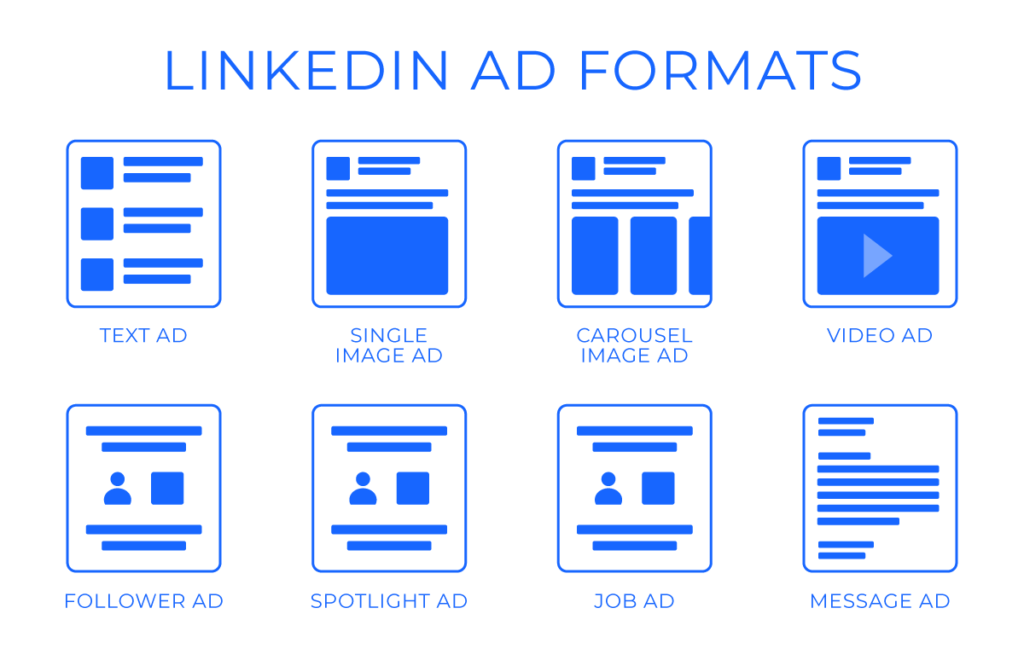
By focusing on engagement, you not only improve your LinkedIn Ads’ immediate performance but also build stronger relationships with your target audience, setting the stage for higher conversion rates and long-term brand growth.
Signs Your Campaign is Underperforming
Sometimes it’s not about hitting a global average, but simply identifying signals that something’s off. Watch for:
- CTR dropping steadily over time (ad fatigue, creative blindness)
- Disparity between high impressions but almost no clicks (bad fit or dull creative)
- High CTR but poor quality leads (fix your offer, qualify your targeting)
Responding quickly with a refresh or creative change is often better than letting campaigns limp along.
The Role of Content Type
Certain content types tend to perform better. Interactive calculators, industry trend reports, or webinars promising actionable insight usually deliver stronger results than straightforward sales pitches. The promise of educational or exclusive content tied directly to a professional pain point tends to get the right kind of attention on LinkedIn.
The Device Divide
It’s also worth looking at device splits. Mobile engagement is up, with users often willing to browse but less keen to type out detailed information. If your CTA involves a download or web form, make sure the landing page is mobile-friendly, or use auto-filled Lead Gen forms for a smoother workflow.
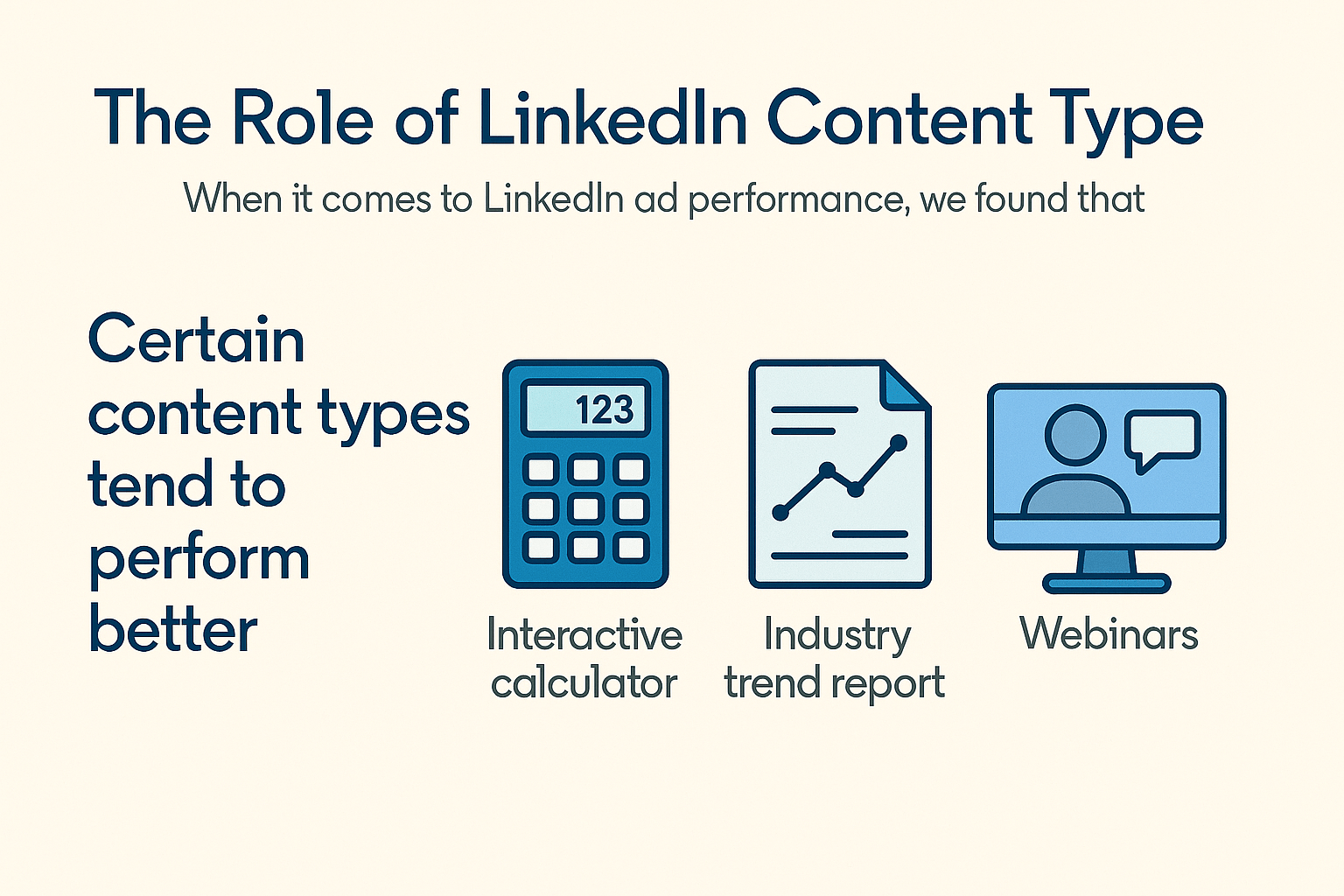
Quick Reference: What Makes a Strong LinkedIn CTR?
Here’s a summary to keep expectations realistic and actionable:
- Aim for 0.4% or above on most Sponsored Content or Video campaigns
- Above 3% on Messaging Ads is a strong sign of resonance
- Compare your data to sector benchmarks rather than chasing a universal ‘magic number’
- Monitor not only CTR, but quality and conversion rates down the funnel
- Small improvements—targeting, copy tweaks, creative refreshes—can double your CTR
Why LinkedIn Ads Excel for B2B Marketing
LinkedIn stands out as the premier platform for B2B marketers, offering unparalleled access to a global network of professionals and decision-makers. Its advanced targeting capabilities and business-focused environment make it the go-to channel for organizations seeking to generate high-quality leads, nurture relationships, and drive growth in the B2B space.
Unique Value for B2B Marketers
- Access to Decision-Makers: LinkedIn’s user base includes executives, managers, and key influencers across virtually every industry. This enables precise targeting of those with purchasing power and strategic influence.
- Advanced Targeting Options: Marketers can segment audiences by job title, company size, industry, seniority, skills, and even specific companies, making account-based marketing (ABM) highly effective.
- Professional Context: Ads are delivered in a business-centric environment, increasing the likelihood of engagement from users who are already in a professional mindset.
- Content-Rich Platform: LinkedIn supports a variety of ad formats—such as Sponsored Content, Message Ads, and Conversation Ads—that are well-suited for sharing thought leadership, case studies, and in-depth resources.
B2B-Specific Benchmarks
Recent global studies highlight the effectiveness of LinkedIn Ads for B2B campaigns:
| Metric | B2B Average (Sponsored Content) |
|---|---|
| CTR | .50–.70% |
| CPC | $6–$10 USD |
| Conversion Rate | 5–10% |
| Cost Per Lead (CPL) | $80–$140 USD |
These benchmarks consistently outperform other social platforms for B2B lead generation, reflecting LinkedIn’s ability to deliver both quality and scale.
Case Study Example
A global SaaS provider targeting enterprise IT managers used LinkedIn’s ABM tools to reach decision-makers at Fortune 100 companies. By leveraging Sponsored Content and Conversation Ads, the campaign achieved:
- .68% CTR (30% above industry average)
- $7.50 CPC (below benchmark)
- 8.5% conversion rate
- $95 CPL
This resulted in a pipeline of qualified leads and a measurable increase in closed deals within six months.
Measuring LinkedIn Advertising Effectiveness
To maximize your return on investment, it’s essential to measure the effectiveness of your LinkedIn advertising campaigns with precision. By tracking the right metrics and leveraging powerful analytics tools, you can gain actionable insights, optimize your strategy, and achieve meaningful business outcomes.
Key Metrics to Track
- Click-Through Rate (CTR): Indicates how compelling your ad is to your target audience. A higher CTR suggests your creative and messaging are resonating.
- Cost Per Click (CPC): Measures the efficiency of your spend. Lower CPCs mean you’re acquiring traffic more cost-effectively.
- Conversion Rate: Reveals the percentage of users who take a desired action after clicking your ad, such as filling out a form or downloading a resource. High conversion rates indicate strong alignment between your ad, landing page, and audience intent.
- Return on Ad Spend (ROAS): Calculates the revenue generated for every dollar spent on advertising. A higher ROAS demonstrates that your campaigns are driving profitable results.
How to Interpret These Metrics
- CTR: Use as an early indicator of ad relevance and creative effectiveness. If CTR is low, consider refining your targeting, messaging, or visuals.
- CPC: Monitor to ensure you’re not overspending for each click. If CPC is high, experiment with different ad formats or adjust your bidding strategy.
- Conversion Rate: Analyze to identify bottlenecks in your funnel. A strong CTR but weak conversion rate may signal issues with your landing page or offer.
- ROAS: Evaluate overall campaign profitability. If ROAS is below your target, reassess your audience, creative, and conversion process.
Tools and Dashboards for Performance Tracking
- LinkedIn Campaign Manager: The native platform provides real-time analytics on impressions, clicks, conversions, and more. Use its customizable dashboards to monitor performance at a glance.
- Google Analytics: Integrate LinkedIn Ads with Google Analytics to track post-click behavior, attribute conversions, and analyze user journeys.
- Third-Party Analytics Platforms: Tools like HubSpot, Salesforce, and AgencyAnalytics offer advanced reporting, multi-channel attribution, and deeper insights into lead quality and ROI.
- Custom Dashboards: Build tailored dashboards using BI tools (e.g., Tableau, Power BI) to visualize trends, compare campaigns, and share results with stakeholders.
By consistently measuring these metrics and leveraging robust analytics tools, you can identify what’s working, uncover new opportunities, and continuously improve the effectiveness of your LinkedIn advertising efforts.
Tips for 2025 and Beyond
With generative AI shaping content, expect more personalised and relevant ads on every platform. Staying ahead requires:
- Creative agility: Switch up designs and formats monthly
- Intelligent targeting: Move beyond basic demographics—segment by behaviour, intent, or past engagement
- Data discipline: Review every campaign weekly. Pivot quickly if performance dips
Successful marketers use CTR as a health check, not the end goal. The most impactful results often come from an ongoing process of learning, adapting, and refining, not chasing the highest number. Analytics are only useful when connected to genuinely meaningful business outcomes.
That’s the mindset that turns a good CTR into a strategy that works.
